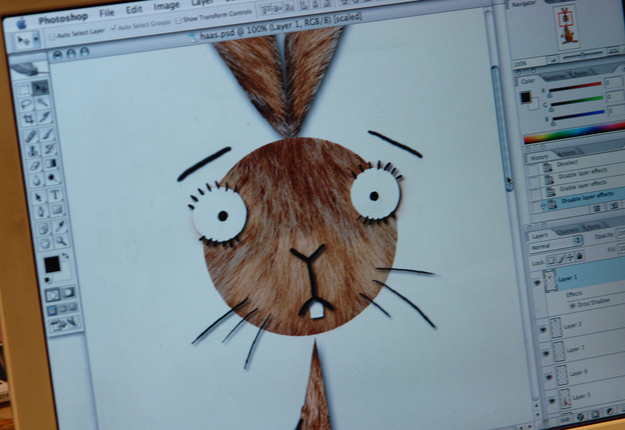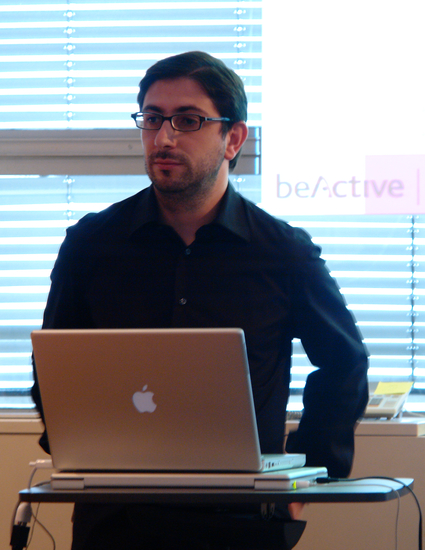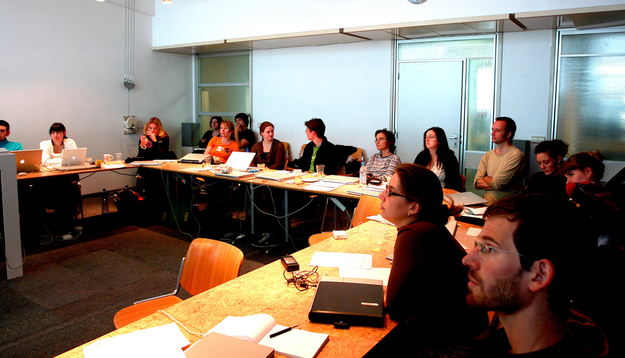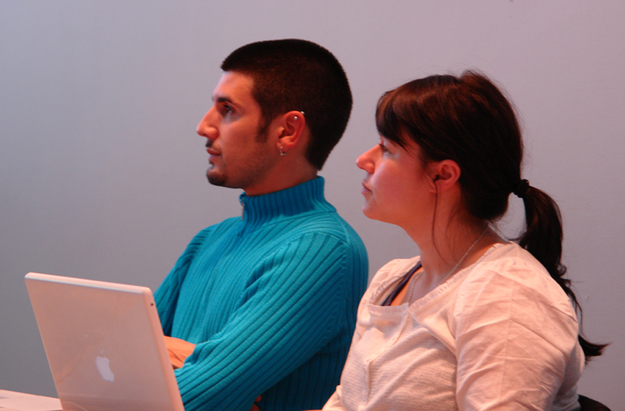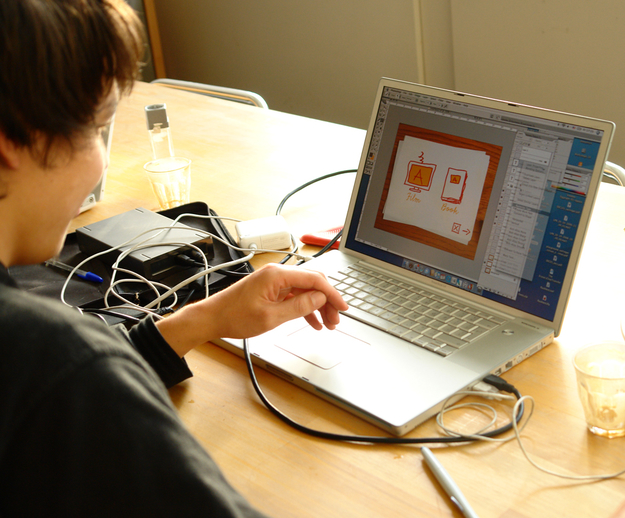Crossmedia for Children
Ricard Gras of London based La_Interactiva showed us some results of a workshop he did with children on domestic violence, in which the Sims2 was used to make small movies of the kids own stories. Lino Hellings and Emer Beamer presented their amazing De School Met De Meeste Ramen, a hand drawn interactive school building online, made together with the school kids. Raimond Reijmers of IJsfontein showed us the brand new Studio, an online collection of free and easy to use drawing, animation and editing tools for children.
Interactive television?
Interactive television used to mean the things that passed between you and your TV set when you pressed the red button on your remote control if you had a settop box on your television. By now it includes video-on-demand, webtv, crossmedia formats with broadcast tv elements and more.
In the context of this wider understanding, it was the goal of this workshop that the participants developed prototypes of interactive television projects for children.
Lecturers
Next to our outstanding workshop team, consisting of Jakob Schillinger, Florian Thalhofer, Klaas Kuitenbrouwer and techical assistants Amy Patton, Lisa Rave and Richard The from the University of the Arts in Berlin, a couple of international experts from the field were invited to discuss their work practice and to react to the participants workshop projects.
Nuno Bernardo, CEO of BeActive, an innovative Portugese crossmedia company, revealed the creative production process that developed Sophia's Diary from a small community site to the large crossmedia production it currently is. Basically, Sophia's diary// started as a collection of relatively low-cost online publications and related communities and production efforts went into those elements that were picked up best by the audience.
Tommi Laitio, main organiser of the OneMinutesJR project and Nienke Eijsink, a videoartist who ran some of the OneMinutesJR workshops explained how to maintain quality in a project that centers around user generated content.
Tom Vedel of AnimationTV from Denmark gave
insightful tips on how to come up with ideas that are suitable for crossmedia treatments. "Never start with a story, start with a universe." Think of a world with an internal logic, that leads a life of its own, and then see how this world can be accessed through different media and platforms.
What was made
Scriptwriter and author Aletta Beckerand developed a detailed presentation of her project Anastasia, an interactive book about a grumpy spider named Anastasia. While the story is read, children
make their own drawings of elements of the story. The drawings are recombined by the system at the appropriate moments, and together build a growing personal version of Anastasia's world.
Ana Vitoria Joly made the project Big Bear, Little Bearin which a child gets a Baby Bear to take care of (a special teddy bear, bought in the toyshop) and to teach numbers and letters. Papa Bear only lives onscreen, now and then gives advice to the child, and checks how things are going. The strenght of the idea is in the fact that Papa Bear can only know about the Baby Bear through the child, so the child feels it is in a position of responsability.
Jorge Lino and Catherine Kahn made the interactive TV project ClassCrossed.. In this interactive series you choose which person you follow during an episode on (interactive) television, and the online part gives you complementary material, sidetracks and background stuff.
Carolien Euser and Madelinde Hageman developed a prototype of ‘the Herrekijker’. (the Retroscope?) The project is a classroom curriculum about looking carefully at the world around you.
Childrens make pictures of the water, trees, clouds or other stuff, and draw over them the shapes they recognize. In the publication tool, the pictures and the drawings are combined in animations.
Roosmarijn Schoonewelle en Maartje Folkeringa developed their animation KIT for children with a background of domestic violence. They developed an online publication environment for an international network of children in relief centres, that can watch each others animations, and react to them with their own animations, all made with the same KIT.
DouweSjoerd Boschman and Sanneke Prins developed an innovative animated story system about Haas (Hare), intended to improve language skills. The animated world is partly drawn by the child and partly generated by the system. Scenes are based on the childs line drawings, and the system asks the child to provide solutions (by drawing) to problems that Haas faces.
A presentation of these projects was held for a full house on October 29th from at De Balie, in Amsterdam.
